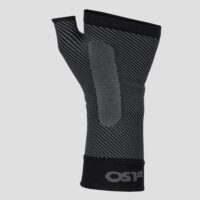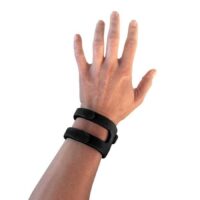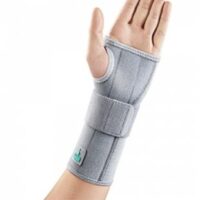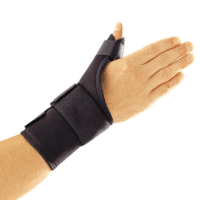Repetitive Strain Injury
Article by John Miller

Repetitive Strain Injury
Understanding Repetitive Strain Injury (RSI)
Repetitive Strain Injury (RSI), also commonly known as Occupational Overuse Syndrome (OOS), arises from the constant overuse of specific muscles, tendons, nerves, and other soft tissues. It’s the repetitive movements that typically cause inflammation and damage, particularly in areas like the upper limbs and forearms.
RSI Explained
Repeated movements can lead to various injuries, from localised ones like wrist extensor tendinopathy, golfer’s elbow, and tennis elbow, to more widespread pain syndromes such as cervicobrachial or chronic pain syndrome.
Recognising RSI Symptoms

Repetitive strain injury presents a range of symptoms. You might experience:
- Pain in the affected area, whether it’s burning, aching, or shooting.
- Tremors, clumsiness, or numbness.
- Muscle fatigue or weakness.
- Challenges in carrying out basic tasks due to pain or weakness.
- Difficulties with everyday actions, like opening doors or chopping veggies.
- Constantly cold hands, particularly the fingertips.
Remember, RSI symptoms can differ based on the injury’s type and severity. If any of these sound familiar, chat with a healthcare expert about the next steps.
Early Warning Signs
Keep an eye out for early indicators of RSI:
- Discomfort, tingling, or soreness in areas like the neck, arms, or wrists after repetitive tasks.
- Symptoms might fade when you stop the activity, but they can stick around for hours or days.
- Unaddressed minor RSI issues can become chronic problems over time.
- Upping your work stress or taking fewer breaks can make symptoms worse and raise the risk of chronic injury. If you notice these signs, get medical advice promptly to minimise further injury.
What Causes RSI?
Numerous factors can trigger repetitive strain injury, such as:
- Constant motions.
- Poor posture while working.
- Forceful actions.
- Overworking specific muscle groups.
- Skimping on breaks during repetitive tasks.
- Working with ill-fitting equipment or in non-ergonomic settings.
- Inadequate training on task execution.
- Working in cold conditions.
How Does RSI Affect the Body?
RSI can inflict damage through repetitive micro-trauma on muscles, tendons, nerves, and joints. This repeated use can cause small tears in muscle or tendon tissue, leading to inflammation. If not rested, scar tissue may form, causing more pain.
Nerves, especially those running from the neck to the hand, can also suffer damage, resulting in tingling or reduced nerve function. Abnormal posture or movements can also impact joints, causing pain and stiffness over time.
For best results, tackle RSI early with medical guidance and a tailored assessment from a physiotherapist.
RSI Management and Treatment
Catching and treating RSI early is essential. If you suspect RSI, act swiftly to prevent it from becoming a chronic issue. Treatment might involve:
- Resting the injured area.
- Physiotherapy sessions to restore movement and strength.
- Ergonomic tweaks in your workspace.
- Medication for pain and inflammation control.
- Lifestyle changes like a balanced diet, adequate sleep, and stress reduction.
- Surgery in extreme cases, though it’s rare.

Prevention through Ergonomic Workplace Assessment
An effective strategy for preventing Repetitive Strain Injury (RSI) involves conducting an ergonomic assessment of your workspace. Ergonomics focuses on designing work environments to fit the user’s needs, thereby reducing strain and the risk of injury. An ergonomic workplace assessment can identify risk factors such as poor posture, improperly positioned equipment, and repetitive task layouts that contribute to RSI. By adjusting your workspace, including chair height, keyboard placement, and monitor positioning, you can maintain a neutral body posture and minimise the stress on your muscles and tendons.
Additionally, ergonomic tools like adjustable chairs, wrist rests, and ergonomic keyboards can significantly reduce the risk of developing RSI. Regular breaks and exercises to stretch and strengthen the muscles can also be part of an ergonomic approach to prevent RSI. Remember, a small investment in ergonomics can lead to a significant reduction in the risk of repetitive strain injuries, promoting a healthier, more productive work environment.
In summary, proactive care and early intervention remain key to managing repetitive strain injury effectively. If you spot any RSI symptoms, make sure to get medical advice straight away.
Conclusion on Repetitive Strain Injury
Repetitive strain injury (RSI) impacts countless Australians, resulting from routine motions that we often overlook. It’s not just an issue for those in physically demanding roles; anyone can fall prey to its effects. Early detection remains our best defence, emphasising the importance of understanding the signs and symptoms. By making informed choices about our workplace ergonomics, daily habits, and seeking timely medical advice, we can mitigate the risks and ensure a healthier, pain-free life. Remember, prevention and early intervention are key to tackling RSI effectively. If you suspect you might be developing signs of RSI, seeking help sooner rather than later can make all the difference.
Related Articles
- Wrist Injuries: Readers will find information about common wrist injuries, their causes, symptoms, and treatment options.
- Elbow Injuries: This page provides insights into various elbow injuries, including tennis and golfer’s elbow, along with their management strategies.
- Ergonomics: This article discusses ergonomic solutions to prevent conditions like RSI, especially in workplace settings.
- Muscle Strains: It covers the basics of muscle strains, a potential outcome of repetitive movements, and how to treat them.
- Chronic Pain Management: Readers will learn about managing chronic pain, which is relevant for those suffering from chronic RSI conditions.
- Nerve Injuries: This page discusses nerve injuries that can arise from repetitive strain, focusing on symptoms and treatment.
- Posture Correction: Readers can learn about the importance of proper posture to prevent RSI, especially in occupational settings.
- Workstation Assessments: Offers insights into common workplace assessment and how to prevent injuries like RSI and how to manage them effectively.




















































